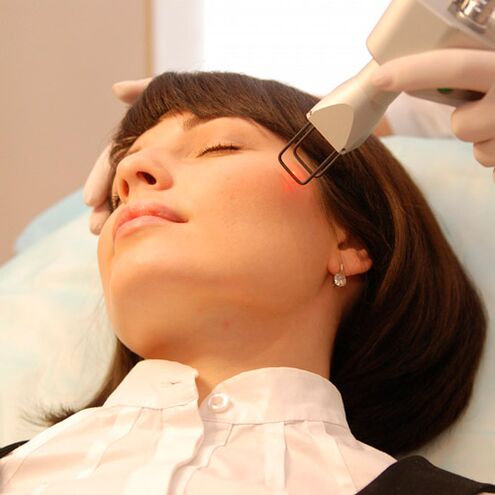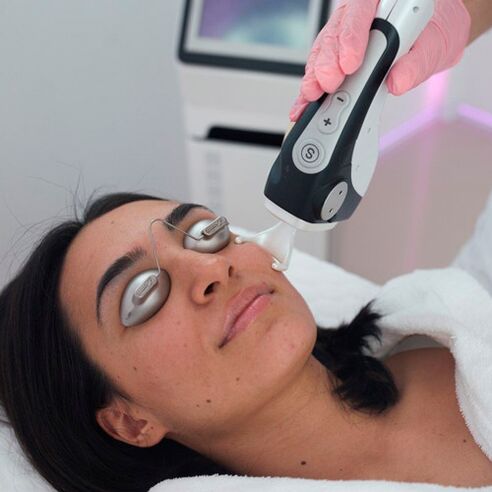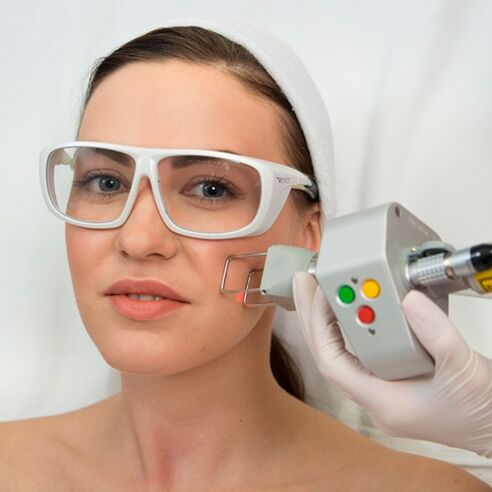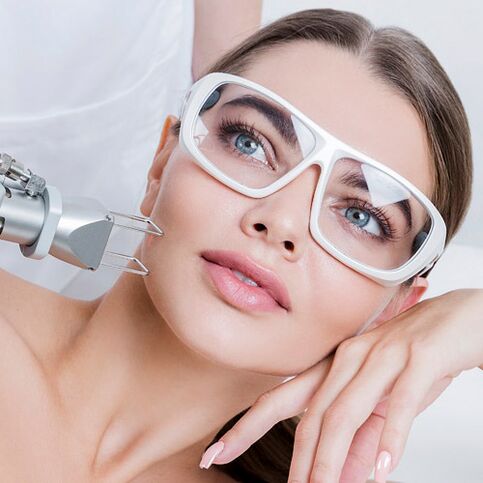Fractional laser rejuvenation- a cosmetic procedure in which the skin is exposed to a laser array of micro-rays. This effect is supposed to activate regeneration processes and collagenogenesis. This is a relatively new but already very popular hardware technology. In another way it's called Fraxel, fractional laser resurfacing, or photothermolysis.

The principle of operation and the variants of fractional laser rejuvenation
How does a fractional laser work? Micro-rays emitted by the device cause a heat shock, in response to which the "lazy" skin cells begin to function more actively. To repair the damaged area, they divide faster. Old cells that have been found to be inoperable die and young ones give way. The warming of the deep layers of the skin is accompanied by a partial denaturation of proteins and the formation of new components of the extracellular matrix, including elastin and collagen.
The depth of impact is differentiatedAblative and non-ablative laser rejuvenation. . . The first is superficial and is similar to sanding. Laser treatment of the upper layers of the skin is associated with the evaporation of moisture and damage to the epidermis. After healing, the skin becomes firmer, its relief and color are balanced. With non-ablative photothermolysis, the laser acts on the deep layers of the skin. In this case, open wounds will not be formed.
Each type of rejuvenation has its benefits and minutes. Thus, the effect of ablative laser resurfacing can already be felt after the first procedure. With this method, you can get rid of deep wrinkles and age spots, post-acne, stretch marks and scars. With a non-ablative procedure there is no risk of infection and the anti-aging effect can be felt for several years. This type of photothermolysis is recommended for people under 40 years of age with the first signs of age: fine wrinkles, reduced turgor.

Indications and contraindications to the procedure
It is worth resorting to the photothermolysis process if you:
- Sagging, sagging skin.
- Both fine and deep wrinkles, crow's feet.
- Pigmentation of any origin.
- Increased sebum secretion.
- Enlarged pores, prone to acne.
- Scars, stretch marks, post-acne.
- Vascular "asterisks" (rosacea).
- Matt complexion.

Contraindications for fractional laser rejuvenation are:
- Allergies, psoriasis.
- Autoimmune diseases.
- Pregnancy, lactation.
- Blood disorders.
- Skin infections, inflammation in the area of the intended treatment.
- All chronic diseases in the decompensation stage.
- Oncology.
- Increased body temperature.
- Diabetes mellitus.
- Tendency to form keloid scars.
- Epilepsy.

Features of laser rejuvenation
Preparation for fractional photothermolysis consists in refusing to visit the solarium and the beach for two weeks. All this time, you can not also clean the skin, do chemical peels, take sulfonamides, fluoroquinolones and tetracyclines. Three days before the procedure, they no longer go to the swimming pool, bathhouse, sauna, treat the area of alleged exposure to alcohol-containing cosmetics. To avoid complications, the beautician can prescribe antiviral and antibacterial drugs for this period. The day on the eve of the procedure should be carried out without alcohol and cigarettes, not going to the gym.
Before the laser treatment, the skin is cleaned of cosmetics and impurities. In general, the effect of the laser is experienced as an uncomfortable tingling sensation, but pain relief may sometimes be required. In this case, the beautician applies an anesthetic to the prepared area of the skin. After the ointment works, he treats the skin with a laser. The duration of the procedure depends on the extent of the treatment area and ranges from a few minutes to an hour. Finally, the skin is soothed with a nourishing cream.
In the first few days after the procedure, you are not allowed to use alcohol-based products that use compression garments to compress the parts of the body that were subjected to photothermolysis. It is recommended to exclude physical activity for a week, visit the pool, sauna or bath, and limit the time on the street. The skin is moisturized three times a day with a special cream. And that for half a month. It is undesirable to do peelings, use cosmetics with retinol, salicylic acid. For two months it is necessary to use a cream with a sun protection factor of 35 or more.

How many procedures do you need to get the result? What effect can you expect?
The rehabilitation phase after fractional laser rejuvenation lasts 3 to 7 days. The speed of recovery depends heavily on lifestyle. Alcohol consumption, smoking, excessive activity, an unbalanced diet, insomnia and anxiety - all of these can slow down the regeneration processes.
In the first three days after the laser exposure, skin redness and slight swelling can be observed. Anesthetics and cooling the skin can help reduce discomfort. It is normal if skin tension is felt within a week, there are flaky spots. A side effect of the procedure may be a bronze tan, which will go away on its own after half a month.
A permanent result after fractional photothermolysis occurs after 2-5 procedures. More precisely, the number of sessions can only be determined by a beautician on the basis of the initial data. The intervals between the procedures are 3-4 weeks. Fractional laser rejuvenation inhibits aging processes: wrinkles disappear or become less noticeable, the turgor increases, the pore strength decreases and the complexion improves. This method is an effective tool in the fight against scars, pigmentation, post-acne and stretch marks.
Fractional laser rejuvenation is one of the three most popular cosmetic procedures. Its advantages include efficiency, short healing times, physiology. The result is visible after the first procedure and lasts for up to three years. The method has a wide range of indications. It is possible to choose the depth of the laser exposure.


























